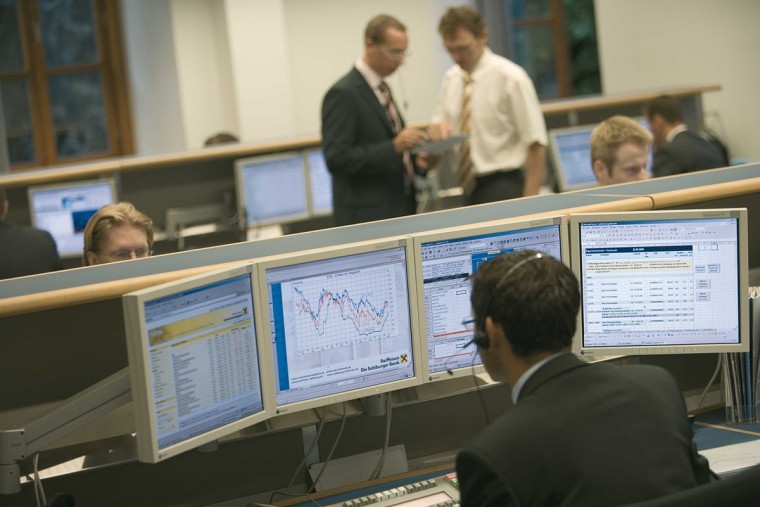
The afterglow from the trade war ceasefire agreed by Presidents Trump and Xi over the weekend has already started to wear off. US equities have reversed most of their initial gains while US bond yields are modestly higher. The USD has performed strongly overnight, which has taken the NZD back below 0.67.
Equity markets and bond yields opened higher yesterday after news of the US-China trade war ceasefire and Trump’s comments that he was considering softening restrictions on Huawei. The Shanghai Composite increased by more than 2%, European bourses rose between 0.5% and 1.2%, and the S&P500 opened 1% higher in New York, making a fresh record high in the process. However, the positive initial reaction by US equities has since started to fade, and the S&P500 is now only 0.4% higher than Friday night’s close. The consensus among analysts appears to be that the underlying structural issues between the US and China remain unresolved, despite the ceasefire, and the uncertainty around US trade policy will remain a headwind to business confidence and global growth.
On the data-front, the US ISM manufacturing survey fell to its lowest level since late 2016, at 51.7, although it still managed to beat market expectations. The market had been braced for a very weak ISM survey after sharp falls in a number of regional manufacturing surveys, possibly linked to Trump’s aborted threat of tariffs on Mexico. The new orders index within the ISM fell to 50, its lowest level since the start of 2016, while, more encouragingly, employment and production increased. The final reading of the lesser-followed Markit Manufacturing PMI was revised higher to 50.6, narrowing the difference between the two manufacturing indicators.
US Treasury yields have bounced modestly higher to start the week on the back of the trade war ceasefire, but movements have been fairly contained. The 10 year Treasury yield has increased 3bps to 2.03%, while the market has pared back its expectations of Fed rate cuts by the end of 2020 by 6bps, to ‘only’ 100bps. The market continues to price over 25bps of rate cuts for the Fed’s July meeting. Fed vice-Chair Clarida reiterated overnight that the Fed would “act as appropriate” to sustain the expansion, and highlighted that the Fed was picking up increasing anecdotes of trade uncertainty affecting investment decisions among businesses.
In contrast to US Treasuries, European yields fell overnight, with the 10 year German bund making a new record low of -0.36% and Italian bond yields falling 15bps. The final readings of the European manufacturing PMIs were similar to the flash readings, and point to contraction in the sector in the euro area. Meanwhile, ECB Chief Economist Philip Lane did nothing to dissuade market expectations of new stimulus measures, saying it was “essential” that the central bank responded proactively to shocks that might derail inflation getting to 2%, and that “the effectiveness of the policy toolkit means that we can add further monetary accommodation if it is required to deliver our objective.” Even the usually hawkish Dutch central bank governor Klass Knot said it was “important to underline the Governing Council stands ready to act decisively.” In the background, European leaders continue to jostle over who should be the next ECB President when Draghi’s term ends on 31 October.
The divergence between US and global rates overnight might go some way to explaining the reasonably sharp rise in the USD. The DXY index was 0.75% stronger to 96.85, its largest one day change since March. The increases in the USD indices overnight have seen them move off the bottom of recent trading ranges.
The EUR was 0.75% weaker against the USD, while the Swiss franc was the worst performing currency overnight, down over 1%. A larger than expected fall in the UK manufacturing PMI, to its lowest level since February 2013, didn’t have much impact on the GBP, which was down a lesser 0.45% to 1.2640. The market remains much more fixated on the chance of a no-deal Brexit and new elections than current economic data.
The NZD and AUD opened slightly higher on Monday morning, as the market reacted to news of the trade war ceasefire, but those initial gains were quickly reversed after a weaker than expected Caixin Chinese PMI survey, which fell to below 50. The overnight strength in the USD has seen the NZD and AUD declines extend further. The NZD is down 0.7% to 0.6670 while the AUD is down 0.8% to 0.6960. The offshore renminbi (CNH) rose as much as 0.7% to start the week, but it has also reversed course over the past 24 hours, and is now close to flat against the USD compared to Friday night’s close.
Yesterday, NZ rates barely budged, despite the increase in US Treasury yields, with the 2 year swap unchanged and the 10 year swap up 1.5bps to 1.8%. The RBNZ released the public submissions to its bank capital review consultation yesterday, with the major (Australian-owned) banks arguing that the proposals were unnecessarily large and created the potential for larger impacts on lending rates and credit availability than the RBNZ’s modelling suggested. The RBNZ confirmed that implementation of any new rules will start from April next year and that there will be a transition period of a number of years before banks are required to fully meet the new requirements.
The focus for the domestic market today is the release of the key NZ Quarterly Survey of Business Opinion (QSBO) at 10am this morning and then the RBA meeting later this afternoon and RBA Governor Lowe’s speech in the evening. Our NAB colleagues expect the RBA to cut its cash rate by 25bps to 1% (the market is 80% priced for a cut).

We welcome your comments below. If you are not already registered, please register to comment
Remember we welcome robust, respectful and insightful debate. We don't welcome abusive or defamatory comments and will de-register those repeatedly making such comments. Our current comment policy is here.